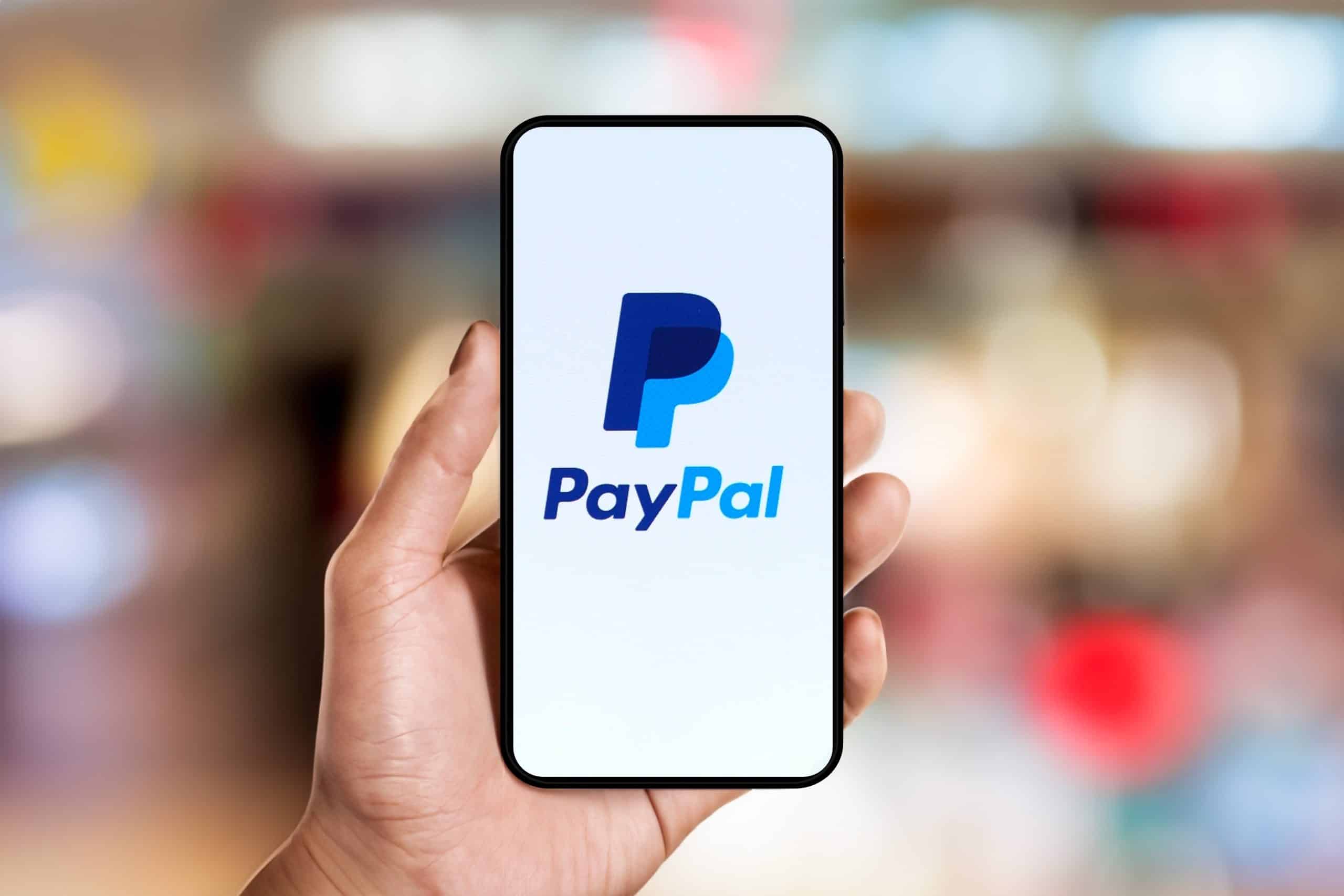PayPal Holdings (NASDAQ: PYPL), once a dominant force in the fintech revolution, finds itself at a critical juncture in 2025. While it continues to serve millions of consumers and merchants worldwide, the company has increasingly turned to financial engineering—particularly share repurchases—as its primary method of delivering shareholder value. Over the past five years, PayPal has poured nearly $25 billion into stock buybacks, significantly reducing its share count. But has this strategy yielded meaningful returns for shareholders? A deep dive into the data suggests the answer is more complicated than it seems.
$24.64 Billion in Buybacks: A Record-Setting Spending Spree
According to the latest data compiled through mid-2025, PayPal has cumulatively spent $24.64 billion on common stock repurchases. This figure places it among the top-tier U.S. companies in terms of capital allocated to buybacks—especially for a firm outside the Big Tech “trillion-dollar club.”
This aggressive buyback activity has had a measurable impact on PayPal’s share count. Over the five-year period, shares outstanding have dropped by approximately 18.57%. On paper, such a move is meant to boost earnings per share (EPS), increase ownership stakes of long-term investors, and signal confidence from management. However, the reality in the market has diverged from this theoretical outcome.
Declining Share Count, but Stagnant Share Price
Despite the substantial reduction in shares outstanding, PayPal’s stock price performance has lagged. From its highs in mid-2021, the stock has fallen significantly and has yet to reclaim its previous levels. This stagnation in share price—even amid massive buybacks—has fueled concerns among analysts and investors about the underlying effectiveness of this strategy.
A drop in share count without corresponding EPS growth or revenue acceleration can be interpreted as a sign of stagnation, not strength. While buybacks can create financial uplift when paired with organic business momentum, they risk becoming mere accounting tactics when the core business underperforms or lacks innovation.
Outspending Free Cash Flow: The Bigger Red Flag
One of the most troubling aspects of PayPal’s buyback strategy lies in its relationship to free cash flow (FCF). For the last twelve months (LTM), PayPal generated approximately $5.29 billion in FCF. However, during the same period, the company repurchased $6.47 billion worth of stock—meaning it spent more than it generated in cash from operations.
Spending more on repurchases than the business generates from its own activities raises questions about financial discipline. It suggests that the company may be borrowing or using reserves to finance shareholder returns rather than investing in product innovation, acquisitions, or international expansion. This approach, while perhaps satisfying to short-term shareholders, could hinder long-term competitiveness.
A Competitive Landscape in Rapid Flux
The fintech space in 2025 is more competitive than ever. PayPal faces growing pressure from both legacy payment processors and disruptive newcomers. Apple Pay, Google Pay, Block (formerly Square), and Buy Now, Pay Later (BNPL) players like Affirm and Klarna are not only gaining market share but also pushing the pace of innovation.
Unlike some of its younger competitors, PayPal has struggled to redefine its value proposition. While Venmo remains popular among U.S. users, its monetization has been sluggish. The core PayPal brand, meanwhile, has seen increased competition in both merchant services and peer-to-peer transfers. In this context, spending billions to buy back stock while revenue growth remains muted signals a reactive, rather than proactive, strategic orientation.
Shareholder Criticism: A Strategy Under Scrutiny
Institutional investors and market analysts have grown increasingly vocal in their criticism of PayPal’s capital allocation. Many argue that the company’s focus on buybacks represents a missed opportunity to rejuvenate the business through innovation, strategic acquisitions, or R&D.
Indeed, some investors interpret the massive buyback effort as an attempt to mask underlying operational weakness. By boosting EPS through reduced share count rather than true earnings growth, the company may be prioritizing optics over substance. Without compelling top-line growth or new product launches, buybacks serve as a weak substitute for organic success.
Contrasting Buyback Strategies: PayPal vs. Apple
To better understand the debate, it’s instructive to compare PayPal’s approach with that of Apple—arguably the most prominent user of buybacks in corporate history. Apple routinely conducts tens of billions in buybacks, yet also invests heavily in research and development, services, and new product categories such as AR/VR and AI.
In contrast, PayPal’s buybacks are not accompanied by a wave of innovation or category expansion. The company has not launched a new flagship product or service that has captured investor imagination in years. As such, its buybacks appear less like confidence in a bright future and more like an effort to prop up shareholder metrics.
The Psychological Signal to the Market
Stock buybacks are often framed as a bullish signal. When a company is willing to repurchase its own shares, it’s typically interpreted as a vote of confidence from management about the company’s intrinsic value. But context matters. When buybacks are conducted during periods of strong operational performance, they reinforce a positive narrative. When they’re executed amid stagnation or strategic drift, they can be interpreted as a smokescreen.
In PayPal’s case, the latter interpretation is gaining traction. The company’s reluctance to meaningfully reinvent its business model or invest in transformative growth is leading many market participants to question whether the current leadership has a bold enough vision for the future.
What Should PayPal Do Next?
For PayPal to re-establish itself as a growth leader in fintech, it will need to shift focus from financial engineering to genuine innovation. This could include expanding into new geographies, partnering with e-commerce platforms, acquiring high-growth startups, or introducing AI-driven tools for fraud prevention, credit scoring, and personalized finance.
A change in executive leadership or strategic direction could also signal to the market that the company is serious about change. Simply continuing to allocate billions to buybacks while revenue growth and user engagement flatline will not be enough to restore investor confidence.
Strategic Alternatives and Road Ahead
Another option for PayPal would be to announce a strategic transformation plan. This could include diversifying revenue sources, investing in blockchain-based payments, integrating with retail point-of-sale solutions, or relaunching a new version of Venmo tailored to Gen Z users.
Shareholders, analysts, and even employees want to see bold thinking. A well-executed pivot—even if it involves some risk—would be more inspiring than a continuation of the current trajectory. As fintech evolves, so too must PayPal.
Conclusion: Buybacks Alone Can’t Save a Business
PayPal’s $24.64 billion in share repurchases over the past five years reflects a serious commitment to shareholder returns. But the lack of corresponding stock performance, revenue acceleration, or innovation suggests the strategy has limited impact.
Buybacks are a useful tool—but they are not a substitute for growth. In a sector as dynamic as fintech, financial engineering must be paired with operational excellence and strategic foresight. PayPal has the brand, the user base, and the infrastructure to stage a comeback—but only if it commits to evolution, not just repurchases.
Comparison, examination, and analysis between investment houses
Leave your details, and an expert from our team will get back to you as soon as possible
* This article, in whole or in part, does not contain any promise of investment returns, nor does it constitute professional advice to make investments in any particular field.
To read more about the full disclaimer, click here- orshu
- •
- 8 Min Read
- •
- ago 3 minutes
 The Rise of the Crypto World: A Technological Revolution That Changed the Face of Global Finance
The Rise of the Crypto World: A Technological Revolution That Changed the Face of Global Finance
The world of cryptocurrencies, once considered a niche and esoteric field a decade ago, has rapidly become one of the
- ago 3 minutes
- •
- 8 Min Read
The world of cryptocurrencies, once considered a niche and esoteric field a decade ago, has rapidly become one of the
- orshu
- •
- 7 Min Read
- •
- ago 2 hours
 European Markets Close Strong: DAX and FTSE 100 Lead the Way
European Markets Close Strong: DAX and FTSE 100 Lead the Way
As the trading day in Europe draws to a close, a sense of cautious optimism prevails. Despite some mixed performance,
- ago 2 hours
- •
- 7 Min Read
As the trading day in Europe draws to a close, a sense of cautious optimism prevails. Despite some mixed performance,
- orshu
- •
- 9 Min Read
- •
- ago 2 hours
 Lemonade Publishes Q2 2025 Financial Results: Profitability, Innovation, and Risk Management at the Core of its Strategy
Lemonade Publishes Q2 2025 Financial Results: Profitability, Innovation, and Risk Management at the Core of its Strategy
Lemonade, Inc. (NYSE: LMND), the insurance technology company that combines artificial intelligence (AI) with innovative models, has published its financial
- ago 2 hours
- •
- 9 Min Read
Lemonade, Inc. (NYSE: LMND), the insurance technology company that combines artificial intelligence (AI) with innovative models, has published its financial
- orshu
- •
- 8 Min Read
- •
- ago 3 hours
 MercadoLibre Stock Falls After Q2 Earnings Miss Estimates Despite Strong Sales
MercadoLibre Stock Falls After Q2 Earnings Miss Estimates Despite Strong Sales
MercadoLibre (MELI) stock fell more than 5% in after-hours trading on Monday after the Latin American e-commerce company reported mixed second-quarter results,
- ago 3 hours
- •
- 8 Min Read
MercadoLibre (MELI) stock fell more than 5% in after-hours trading on Monday after the Latin American e-commerce company reported mixed second-quarter results,












